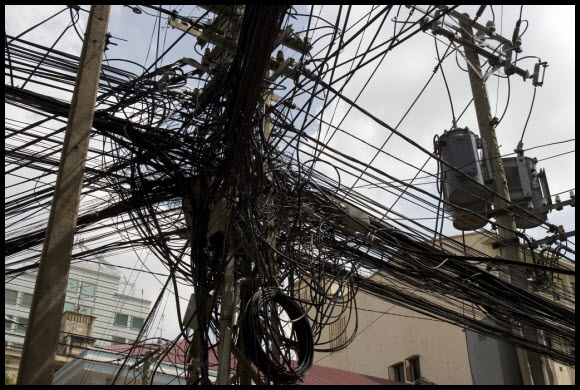


Posted 12 December 2013 - 04:29 PM


Don't pm or expect an answer from me here ... the links above are my contacts.
I know so much about so little that I could teach you all there is to know about nothing......
Posted 12 December 2013 - 09:55 PM
Posted 13 December 2013 - 12:16 AM
Glad to hear that it helps..![]()
Don't pm or expect an answer from me here ... the links above are my contacts.
I know so much about so little that I could teach you all there is to know about nothing......
Posted 14 December 2013 - 11:08 PM
Great info for sure! ![]() Myself being a old Car Audio installer from the late 80's through the 90's, I was witness to the downfall of car audio in the respects of quality ... "build it cheaper and faster and sell it for more money". I have had my share of chasing down engine EFI and the horrid engine whine.
Myself being a old Car Audio installer from the late 80's through the 90's, I was witness to the downfall of car audio in the respects of quality ... "build it cheaper and faster and sell it for more money". I have had my share of chasing down engine EFI and the horrid engine whine.
I have 2 questions for you Zebulon related to our cabs ...
If we are using more than one power supply like I am (mine happen to be PC power supplies) should they be grounded together? Using the Molex connectors and removing the 12v and 5v wires and connecting the black grounds together or just run both grounds to the ground buss bar for the cab? I have my PC on a slide out tray, should I make sure that tray is in the ground loop? What about the PC power supply, in the loop (bonded and earthed) or not?
Should we still keep the LedWiz on a separate ground loop? I have seen it posted in a few places that it should be kept in its own ground loop, but if the power supplies are connected then maybe it does not matter.
Ok OK that was like 5 questions, sorry. I have started to pull my cab back apart because I have some small issues that is EFI related (sound cutting in and out and louder with the nudge button pushed and random windows disconnect sound from usb).
I knew that I was going to need to do this anyways because I finished it in a hurry to show off the family that came in from out of town. Ok back to wiring
Thank you
Posted 15 December 2013 - 05:15 PM
Hey sorry for the late reply,
If you are using 2 atx psus in your cab they will already be sharing the ground from the ac plugs. It doesn't hurt to bond the chassis' of the 2 together, but the shielding of the chassis is already more than enough (the circuits inside are already bonded to the chassis as well as grounded). It certainly wouldn't hurt to put the output grounds to a common point as that would help keep the outputs working properly throughout the cab.
Drawer slides are hard to get a good bond with due to the loose tolerances that the ball bearings provide in the connection. Having said that, it's not a bad idea to bond the bracket just to cut down on the possibility of them becoming an antenna.
The ledwiz will function most reliably by putting the outputs in the common loop with everything else. By that I mean connecting the gnd tab on the board to the common ground point of the cab. This is important if using something like the barebones booster board that I sell. Without a common grounding point between the ledwiz output and the power input on the booster, there isn't a complete circuit and strange things start to happen (because the circuit will seek a common grounding point, even through a positive connection).
I would bond the chassis of the pc to the system. Once again, your pc is operating on a frequency that equals microwave transmission frequencies, just not at the same strength. Ever seen the knockouts that you have to remove in order to install a new riser card or cdrom drive? Those are there to close the gap in the shielding that would exist otherwise. Your pc will become bonded by it's connection to the mains ground as well, but a braided connection will provide a much shorter and reliable connection than the rinky dink stranded wire connection inside your power supply cable.
Hope this clears things up for you.
Don't pm or expect an answer from me here ... the links above are my contacts.
I know so much about so little that I could teach you all there is to know about nothing......
Posted 15 December 2013 - 05:55 PM
Thank you very much, that was the info specific to my build that I needed. Maybe some others will benefit also.
I misspoke when I said LedWiz, I was really thinking about the iPac. But that is some very good points that I had not thought of regarding the LedWiz.
So the iPac should be in it's own ground loop or with the rest of the chassis ground?
Thanks again ![]()
Posted 15 December 2013 - 06:09 PM
The Ipac is a different animal entirely.
There are no power connections on the ipac and the GND connections that are on the board are actually the source if the signal that is being switched.
It would be more appropriate to label it "common" so as not to confuse people into grounding it to their common bus.
Don't pm or expect an answer from me here ... the links above are my contacts.
I know so much about so little that I could teach you all there is to know about nothing......
Posted 16 December 2013 - 02:30 AM
The Ipac is a different animal entirely.
There are no power connections on the ipac and the GND connections that are on the board are actually the source if the signal that is being switched.
It would be more appropriate to label it "common" so as not to confuse people into grounding it to their common bus.
static electricity and bad ground can do a lot of funny things......
most electronics have a electron field around it creating static electricity.....some electronics too close together can create a hummm....seperate and could not hurt to make a ground.
ex: i have an outdoor mast mounted amp for TV on the pole and the amp behind the TV....i grounded the pole with a 10gauge wire to the ground with a stake to protect it from static electricity.....static electricity is harmful and can create alot of funny problems.
another example is the light panel on car radios.....front panel lights dancing to the music at higher volumes......probably a small cheap 18-22guage ground wire and a bad ground source.....for most use a 12-14gauge stranded wire and find a good ground source.
cheap or non-supressed spark plug wires willl crackle and whine with engine RPM.
Edited by chas, 16 December 2013 - 03:26 AM.
Posted 17 December 2013 - 01:10 PM
Static electricity is a good point Chas, another good reason to bond the coindoor and the legs. For anyone that is reading, unless you have metal flipper buttons, bonding the siderails is unnecessary.
Don't pm or expect an answer from me here ... the links above are my contacts.
I know so much about so little that I could teach you all there is to know about nothing......
Posted 17 December 2013 - 06:55 PM
Static electricity is a good point Chas, another good reason to bond the coindoor and the legs. For anyone that is reading, unless you have metal flipper buttons, bonding the siderails is unnecessary.
here is a possibilty. alot of you are running a full cab with 2 and 3 monitors and a GFX card....cards use a lot of juice....
if it were my cab i would make a power cord for this....
i have plans to build a cab....i went to my local hardware store and bought 10ft of 3wire 12gauge cord, heavy duty industrial 15amp male/female ends to handle the huge power consumption.....maybe 20 amp male/female ends will be better....the wall outlet will need the 20amp plugin.....maybe alot of you are having trouble because you are using a cheap 14-16gauge cord....it cant handle the power consumption....the 14-16gauge ground wire is too small.....these cheap 14-16gauge cords and extension cords are for light duty.....not for this.
a good cord and 15amp plugs might be ok......be careful with 20amp
https://www.google.c...ta&channel=fflb
Edited by chas, 17 December 2013 - 07:05 PM.
Posted 24 December 2013 - 09:09 AM
Zeb - question for you. My computer on-off switch is wired to a relay which turns on the power supply to everything else - similar to what is described in the Electrical 101 manual. However, every so often the relay got stuck - literally stuck in the on or closed position even after powering down the computer, and to fix it required a little tap or shake of the relay to get back to the off or open position. While I'm no expert, I assumed this was due to the high back EMF currents flowing around.
I found a solution was to wire veristors between the mains live/earth, live/neutral and earth/neutral. My mains is 240v and the veristors I'm using are rated at 300v. The problem does not occur anymore as I assume that any excess voltage mainly from the EMFs and above 300v is shunted away from the relay.
Is this an okay solution or am I likely to kill myself playing pinball one day?!
Posted 26 December 2013 - 03:03 PM
Sounds like you have it licked Ken. Usually you only need to install 1 varistor in the line (look at any old pinball machine for verification on this) but that's just a "cost saving" measure...it certainly isn't going to hurt anything by covering all of your bases as you have.
A quick note on my post......Reading back through it I see that I neglected to mention that bonding all metals should be done to that which is not "in circuit"...meaning that if you were using metal canned solenoids that have a ground connection through the can or body, bonding the can will defeat the switching option on these...you will be triggering all of the solenoids each time one goes live.
Bonding is for the "inert" parts of your cab, legs, tv chassis, coin door, etc and not for something that is part of a switching circuit....![]()
Don't pm or expect an answer from me here ... the links above are my contacts.
I know so much about so little that I could teach you all there is to know about nothing......
Posted 16 January 2014 - 10:11 PM
Win 7 Pro 64 Bit Sp1, [email protected], 8GB DDR3 RAM
NVIDIA GeForce GTX 950 2Gb, NVIDIA GeForce GT 610 1Gb
Crucial MX250Gb Primary' Samsung 840 128 Gb Backup
Corsair CX750 PINDMD3
Emulation Station →
Virtual Pinball Cabinets →
KL25Z and LedWiz Configuration IssuesStarted by QuazL , 15 Nov 2023 |
|
||
Emulation Station →
Virtual Pinball Cabinets →
LedWiz + 6.3V SMD bulbs + 12V RGB boardsStarted by Fleep , 06 Aug 2022 |
|
||
Emulation Station →
Virtual Pinball Cabinets →
PinScape USB ID, LEDWiz, DOF & LEDBlinky 'Conflicts'Started by dondi , 01 Dec 2020 |
|
||
Emulation Station →
Virtual Pinball Cabinets →
Two LED's in series, with single booster circuit + pinscape output?Started by dielated , 06 Nov 2020 |
|
||
Emulation Station →
Virtual Pinball Cabinets →
CANNONBALL! My Build With 3D Printed Cannons!Started by Vanlon , 28 May 2020 |
|